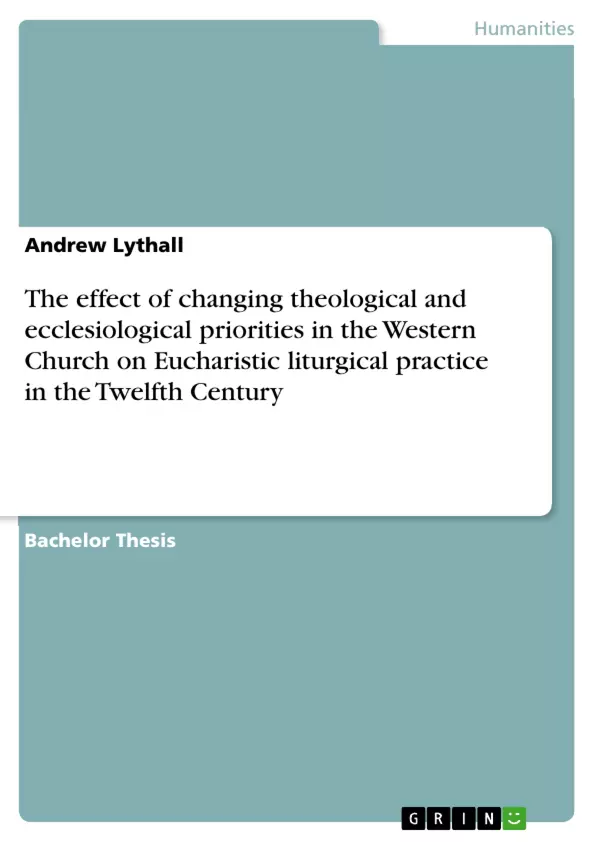The twelfth century saw dramatic changes in the priorities of the Western Church and its doctrinal emphasis. As a result, this period saw much development in the theory and praxis of Christian theology, ecclesiology and, markedly, liturgy. As well as an increased liturgical centralisation and a vastly heightened emphasis on Eucharistic celebration, the twelfth century also saw a renewed attempt by the Church to include the laity in Eucharistic devotion, although this generally manifested itself in serving to further remove the laity from liturgical rites.
The development of Eucharistic liturgy during this period was especially radical and far-reaching. Primarily, such developments concerned celebrative practicalities, although a shift in the Church’s theological paradigm also led to critical theological changes. Furthermore, substantial proportions of the alterations to the Eucharistic rite made between 1100-1200 are still in use today, and continue to inform the practical theological expression of the liturgical relationship between Eucharistic rite and ceremony. The legacy of these developments thereby presents a considerable challenge for the contemporary Western Church not only in terms of its worshipping practice, but also its liturgical ethic.
Inhaltsverzeichnis (Table of Contents)
- Introduction
- Theological and Ecclesiological Priorities of the Western Church, 1100-1200
- Emergent Eucharistic Liturgical Developments
- Liturgical Development of the Monastic Orders
- Conclusion
Zielsetzung und Themenschwerpunkte (Objectives and Key Themes)
This dissertation examines the significant impact of changing theological and ecclesiological priorities in the Western Church during the 12th century on Eucharistic liturgical practices. It investigates how this period of reform and consolidation within the Church led to the development of a more standardized and universal liturgical experience.
- The changing theological and ecclesiological landscape of the Western Church during the 12th century.
- The evolution of Eucharistic liturgy and its relationship to the Church's evolving doctrinal emphasis.
- The impact of liturgical developments on the role of the laity in Eucharistic devotion.
- The legacy of these liturgical developments for contemporary Western Christianity.
Zusammenfassung der Kapitel (Chapter Summaries)
The first chapter provides an overview of the state of the Church in Europe at the turn of the 12th century, highlighting the increasing influence of the papacy and the quest for greater uniformity in liturgical practices. The second chapter delves into the key theological and ecclesiological shifts within the Church during this period, examining the evolving priorities and their influence on liturgical development. The third chapter examines the specific developments in Eucharistic liturgy that emerged during this period, focusing on changes in celebrative practices, theological paradigms, and the standardization of rites. The fourth chapter explores the impact of these changes on the liturgical practices of monastic orders, highlighting the adaptations and innovations that occurred within these communities.
Schlüsselwörter (Keywords)
Key terms and concepts explored in this dissertation include Eucharistic liturgy, Western Church, 12th century, theological and ecclesiological priorities, liturgical development, standardization, transubstantiation, monastic orders, and the legacy of liturgical changes.
- Citar trabajo
- Andrew Lythall (Autor), 2009, The effect of changing theological and ecclesiological priorities in the Western Church on Eucharistic liturgical practice in the Twelfth Century, Múnich, GRIN Verlag, https://www.grin.com/document/139025



